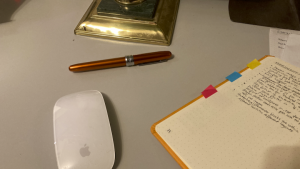The obituaries for Sir Clive Sinclair and the media commentary on the origins of personal computing prompted me to remember how I became a relatively early adopter of personal IT.
I think my youngest brother Terry was given a Sinclair ZX as a present but rapidly lost interest. I took it over and started buying means of learning about computers. I was wary of learning any coding. But I was curious just to make it work. I bought a small television to connect to the keyboard, bought memory cards to expand the information that could be stored, and the magazines that appeared to support the ZX user. I think the best thing I ever achieved was playing a computer game that came on a cassette, driven by a standard portable cassette player. This would have been the early 1980s.
Later the Microsoft PCs began to appear and I was fascinated but they were far too expensive for me. One appeared in my workplace at Thames Water and I aimed to use it for letters or anything I could at the time. Later on my local Labour Party acquired one, and I bought a book on the operating system – MS-DOS. I practiced using the ‘command line interface’ to create files and directories.
Around that time I picked up the contemporary equivalent of a laptop. It was a keyboard with a small screen at the top that displayed three lines of text in a dot matrix style. Eventually I found I could connect that to a portable printer made by Brother. This may have been 1987, and I used it for my councillor casework letters until members were provided with a PC in the Members Area. The most popular format for the screens was green text on a black screen. Letters could be stored on ‘floppy discs’. These were thin plastic discs about four inches wide. They were superseded by a smaller cartridge style disc until CD-style storage became standard. I remember being wowed at some new computers that Thames water installed with 10 megabytes of storage.
It must have been 1991 or so before I had my own personal computer. I had longed to own an Apple Macintosh, especially the ‘Classic’. But my first Mac had speakers built in either side of the screen, presumably so the computer could play music. What excited me about this Mac was I could connect to a new thing called ‘ the internet’. I bought a separate ‘modem’ as they were called. I had seen one at work. Their function was to translate signals from the telecommunications system into text on the screen.
There was precious little I could connect with, but I was able to send emails. This was around 1994/5. But I did successfully order something over the internet from Germany. It was a collection of fonts including that used by the Labour Party in their campaign literature at the time. This was under Neil Kinnock. I was able to use the official font, and bought a rose logo, so that newsletters for the ward looked authentically Labour. Peter Mandelson must take the credit for improving the graphic literacy of the Party. I also used the Mac during a local election campaign, and later used the PC extensively at the local Labour Party when I was Constituency Secretary for five years.
My proficiency with computers led to my secondment at Thames Water into ‘user testing’ new IT systems and later working in the Communications team promoting the imminent arrival of a new software suite for customer accounting functions. I created newsletters for the project using Microsoft Word and had it printed commercially. I also ran presentations connecting a PC to a projector. Usefully, the skills I picked up there saved money in my next job at Camden Council.
I was working for the councillors at Camden. Officers like me managed the casework for the members and produced letters for their signature. When I started each councillor had his or her own letterhead and this was obviously a regular consumable cost. Because I had picked up at Thames Water how to create templates in Microsoft Word, I was able to create a template for each councillor, so that the department only had to produce a generic letterhead for the Council that could be used for any councillor and thereby saved on personalised letterheads that were never used.
Before Camden made me redundant, I was working on developing an IT system for councillors linked to the area forums that I supported. The irony here is that the incoming Labour administration were responsible for curtailing that programme. But it was the cuts to local government under David Cameron’s administration that led to a restructuring in the policy department, and my redundancy.
It is only though composing this post that I realise I have been close to developments in computing and IT for over thirty years. And this blog begins the baby steps in the next strides I make into an internet presence. I have blogged before, and connected with people I used to work with. I hope to reach a wider audience with this attempt. Eventually.
